#mandelbaum gate
Explore tagged Tumblr posts
Text
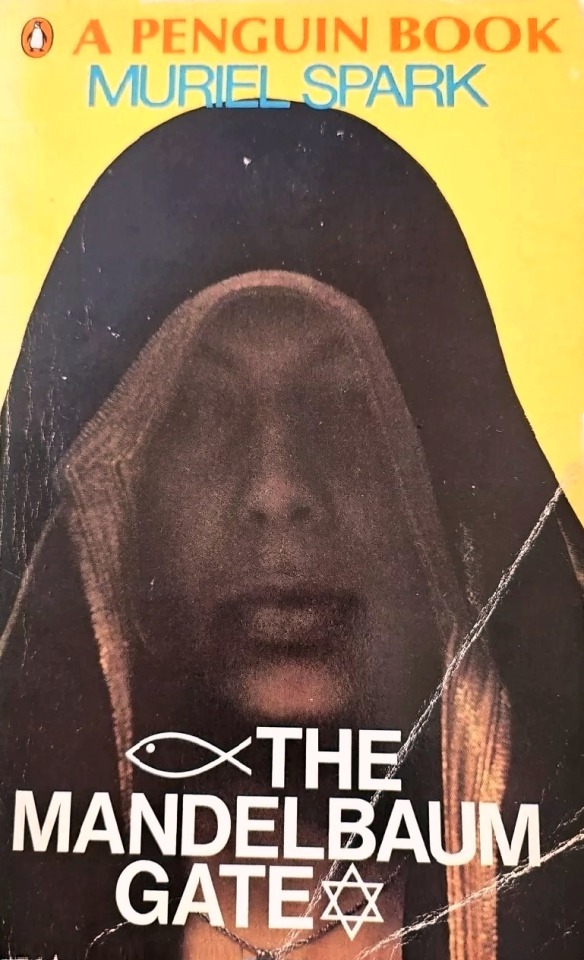
Muriel Spark - The Mandelbaum Gate - Penguin - 1967
#witches#almond trees#occult#vintage#ἰχθύς#the mandelbaum gate#david#penguin books#novel#gate#mandelbaum#muriel spark#1967#nuns
6 notes
·
View notes
Text

Thinking about this piece I drew back in April/May of the most tender moment in Inferno 9. Virgil and Dante still barely know each other at this stage in the journey, so when they run into their first real conflict at the gates to the City of Dis, their dynamic is tested (this is the subject of the first comic I posted here, also about Inferno IX.
The moment when Virgil protects Dante from the threat of Medusa is tense because it is unclear whether or not the will of God is absolute. Is Dante’s journey to the top of Paradiso fated, or will he be forced to turn back like Orpheus, or worse, be trapped there forever in the mire of acedia in which he started?
Regardless of the significance of Medusa, Virgil doesn’t yet trust Dante to protect himself in the hostile world of Inferno. This is what makes the moment where he not only spins him around and tells him to cover his eyes, but THEN places his hands over Dante’s to make triply sure, so loving.

Mandelbaum translation from Digital Dante


Dante and the Gorgon Within—Margaret Nossel Mansfield

Epic Tradition and Inferno IX—David Quint

Dante outfit reference from the painting Dante presenta Giotto a Guido da Polenta—Giovanni Mochi
#divina commedia#divine comedy#dante alighieri#virgil#illustration#dante’s inferno#la divina commedia#the divine comedy#dante#traditional art#publius vergilius maro
214 notes
·
View notes
Text
Most importantly, the West’s reassurances that NATO would not expand “one inch eastward” are commonly presented as Russian mythmaking and misinformation. However, declassified documents reveal that repeated assurances that NATO would not expand were given by Western leaders such as James Baker, George Bush, Hans-Dietrich Genscher, Helmut Kohl, Robert Gates, Francois Mitterrand, Margaret Thatcher, Douglas Hurd, John Major and Manfred Woerner (National Security Archive, 2017). [...]
In a meeting with Shevardnadze, Baker similarly assured “there would, of course, have to be iron-clad guarantees that NATO’s jurisdiction or forces would not move eastward” (Brown, 2020: 325). West German officials seeking Moscow’s support for reunification similarly sought to reassure Moscow that NATO would not expand. The West German foreign minister, Hans-Dietrich Genscher, made this explicit in several speeches: “Whatever happens in the Warsaw Pact, an extension of NATO’s territory to the east, that is, nearer to the borders of the Soviet Union, will not happen” (Sarotte, 2021: 52). NATO Secretary-General Manfred Wörner, similarly assured Moscow on 17 May 1990 that “The very fact that we are ready not to deploy NATO troops beyond the territory of the Federal Republic gives the Soviet Union firm security guarantees” (NATO, 1990). These documented promises continue to be dismissed by the West as “myths and misperceptions” (Chatham House, 2021). [...]
There was initially an overwhelming consensus among US policymakers after the Cold War that NATO expansion would poison the relationship with Russia and reignite a conflict (Grayson, 1999). After significant lobbying, the consensus shifted under the ideological argument that NATO had converted itself into a peaceful community of democracies. Beneath the new branding of NATO, there was nonetheless recognition for the implied continued mission of containing Russia (Grayson, 1999; Mandelbaum, 1995). Even hawks, such as Richard Pipes signed a statement by the Coalition Against NATO Expansion (CANE), which recognised that: "By its nature, a military alliance is directed against someone. The geography of NATO expansion makes its target clear: Russia... The proposal to expand NATO tosses it away by telling Russia in unmistakable terms that it remains excluded from the community of Western nations... [Russia] will remember, and ultimately, she will react, either from a position of renewed strength or out of desperation. The last great unfinished business of the 20th century is the reintegration of Russia with the West. With the proposal to expand NATO, we have turned our back on it" (CENA, 1998). [...]
Russia raising the security concerns of an expanding military alliance and being excluded from Europe reaffirms Russia’s backwardness and made NATO expansion even more necessary. NATO had transformed itself into a community of liberal democratic values and NATO’s failure to expand was a great danger as it would reaffirm the Soviet propaganda that NATO is an offensive military alliance rather than a defensive alliance: “If Russia’s rulers have no revanchist aspirations, they have no reason to resent NATO's inclusion of the new democracies” (Will, 1996).
Russophobia: Propaganda in International Politics by Glenn Diesen.
38 notes
·
View notes
Text
I need to read The Mandelbaum Gate because it promises to be a canonical text on the Assimilation and its Discontents syllabus but for this reason also I am apprehensive in the extreme. Very few authors manage to be as weird about Jews as Muriel Spark is with a comparably sparse descriptive palette
#The phrase 'square Semitic head' has been rolling around my brain like a billiard ball for 24 hours#Tfw your internalized antisemitism gets metabolized into fictional character phrenology
10 notes
·
View notes
Text

So... Dante's Inferno. I promised my second post would be a deep dive into the parallels and allusions being made to Dante in s2 of Malevolent. In other words, I'm going to finally make my case for you.
I think it's a pretty good one! But I guess whether you agree with me is up to you.
I'll preface this by saying that the last time I read the Inferno cover-to-cover was about fifteen years ago. I did some skimming to reacquaint myself while relistening to this season, but I didn't do a deep dive. So let's just call this an inexhaustive list, okay? I'm sure there are more examples than I'm going to throw out in this post, but I figured that I'm writing a tumblr meta not a dissertation, so it would be okay if I didn't have every single potential allusion.
I'll also say that any quotes I make are from the Mandelbaum translation just because it's by far the easiest to understand. I'm not going to be doing citations or anything (again, not a dissertation) but if you want to know any of my sources, just drop me a line and I'll be happy to drop the canto.
(cw: discussions of suicide, violence, and general Christianity)
As I said before, I believe that the Dreamlands, as Arthur Lester experienced them, were a manifestation of Dante's Dis that The King in Yellow used specifically to give Arthur a path towards penitence and salvation, hoping that he would eventually allow himself some sort of "divine forgiveness."
In other words, the KIY forced Arthur to face the punishments of the last four circles of Dante's Inferno in the hopes that it would cause Arthur to let go of his guilt, and therefore his attachment, to Faroe. And then, of course, he could make his move.

(In plainer English, sometimes a person who is dreaming wishes that they were dreaming, not knowing that they already are. Like that, Dante wanted to be forgiven for his actions not realizing that he already was. Dreamlands, penitence, guilt, etc. It's a whole thing.)
I'm going to try to stay on track in this post because there's a lot to cover. I'm going to talk about some of these concepts and themes a lot more in-depth later, but for now I just wanna lay out some very surface-level observations.
Dis is a gated section of Dante's Hell that includes circles 6-9 -- in other words, the circles dedicated to punishing the heretics, the violent, the fraudulent, and the traitors.
We should probably technically start with 6 and make our way down, but the ordering gets a little fuzzy as we go, so I'm going to structure this a little differently.
This is my meta so frankly I'm going to do what I like here. I'm just going to talk about these in the order I find them most compelling.
The first part of s2 that really made me sit up and take notice was the living forest that Arthur and John pass through near the beginning of the Dreamlands. Dante's forest of souls in the seventh circle is one of the most famous and lingering images of the entire poem, so it immediately caught my attention.
I'm going to be dedicating an entire post just to this forest, so I won't go into too much detail here, but there is a forest in the seventh circle where the trees are black and gnarled, like the ones in the Dreamlands, and like the ones in the Dreamlands, they were watered with blood.
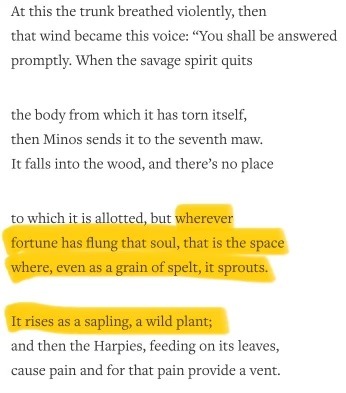
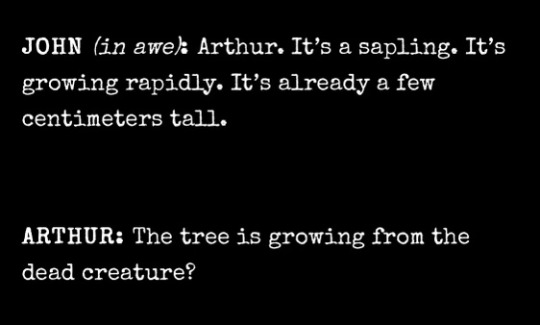
These are the bodies of souls who committed suicide, and Dante is told that when the end times come and Hell is emptied out, when all of the other souls are reunited with their bodies, these souls, in punishment for taking their physical bodies for granted, will be forced to carry their own corpses hanging from their branches.
These trees can speak and bleed, and -- I mean, there's a lot to say about themes of suicide and self-sacrifice in s2. There's even more to say about this concept of protecting your physical body, not giving it up, and not allowing yourself to be separated from it. And then what does it mean when John and Arthur sacrifice a piece of themselves to this living wood in the end...?
Those are questions for a later post. But the parallels between the Dreamlands forest and that in the Inferno seem clear -- and that's before the winged monsters come. Yes, that happens in the Inferno, too, and they're Harpies.
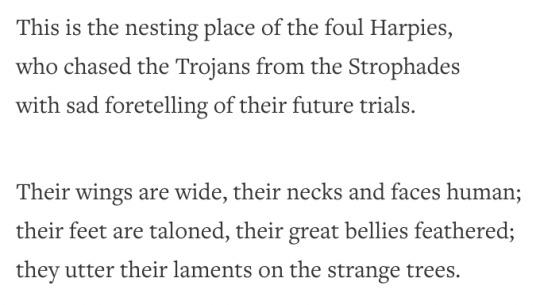


(*looks into the camera like Kermit the Frog*)
There is also depiction of dismemberment in this section of Inferno, which is another pretty crucial similarity to Malevolent.
Ugh, I did get bogged down in some details. Let's be brief with the rest of 7.
Other key punishments found in the seventh circle of Hell and also the Dreamlands: a sea of red sand in a desert that is so hot that it constantly burns you, a vast ravine, an incredibly painful storm, and various red bodies of water surrounded by black rocks. Different water does different things, but none of it's really good. It's probably good that John and Arthur didn't go in the red or purple lakes.
(Perhaps more of a stretch, when Dante and Virgil are taken to the next circle of Hell, it's via a huge serpentine creature that can sting people. It's not exactly the same as the snake in the boat... but well. It is a serpent and a boat is a method of conveyance.)
Circle 8 -- fraud. Circle 8 is comprised of these things called "malebolge", and I've seen a lot of different translations of that word. The male- part is easy -- it's the same one that we see in "malevolent". Evil. The -bolge part I've seen translated as pouches, ditches, trenches, and... well, pits.
There is this really, really, really long part of the poem where they go around to all the pits to see all the different kinds of punishment for fraud. I'm not going to be exhaustive here, nor do I think that all of it lines up quite as 1:1 as it did in circle 7. Some of these things I'm about to point out I think are stretches but others I think are pretty clear.
The two main parallels to circle 8 that I see in Malevolent are the giant pit that they fall into (where they encounter the creature that's being fed) and the smaller prison pits that they're later trapped in by the KIY.
Let's talk about the cave system first. When Dante and Virgil first enter Dis (and in other parts going forward) they struggle with a lot of uneven, gravelly terrain that Dante occasionally falls on. (Created by earthquakes that happened because of Jesus, but that's not important.) That does seem to correspond to the gravelly ground that gave way beneath Arthur and John to send them into the vast blackness that has quite a bit in common with a few of the malebolge. One malebolge is an endless black void that Dante eventually realizes is filled with black pitch. (See: the endless darkness of the pit.) Another is filled with stench and refuse, like the rotting remnants of the creature's dinners. Another involves heads being wrenched from their place and turned around in their sockets, reminiscent of Arthur's dislocated arm.
Other malebolge seem to align with later experiences, like when they are in the ritual halls and in the prison pits themselves. There are two malebolge that seem to speak to Arthur's concern that John will either be separated from him or take over his body: one pit contains dragon-like snakes that bite the punished sinners, then slowly transform into the sinner as the sinner becomes the snake; the other pit involves people being quite literally cleaved in two.

(From the part where the dragons become one with the sinners, then take their bodies. Sounds familiar!)
A third malebolge contains sinners who are being tortured with incessant thirst, like Lorick the cana.
So I do think that the actual contents of these evil pits come up fairly often throughout Arthur's travails, but I think the much bigger issue, and the one that maps more clearly onto Arthur's time in the Dreamlands, is the concept of pits designed to punish prisoners in the first place. The description of the malebolge (circular pits surrounded by a huge wall that encircles all of them) is similar to that of the prison pits (many circular pits that are encircled by a huge wall) and, like the sinners bound to their malebolge, John and Arthur are being tortured in their prison pit as well.
Even more interesting, I think, is a particular sinner that can be found later in the 9th circle. (Forgive me for jumping ahead a bit, but you'll see in a moment why I'm doing it.) There's a man named Ugolino that Dante encounters in the lake of ice who is frozen to another man -- and Ugolino is eating that man's head. Why? Because in life, that man held Ugolino and his children prisoner and purposefully starved them.
Now -- this next part is argued over by both translators and scholars (one of the translators I consulted for this had a whole diatribe about this in the middle of his translation, lmao) but what I'm about to say does seem to be an accepted interpretation of the text. I even checked Sparknotes and it's the only interpretation they give, so I assume that regardless of what Dante intended, this is a common modern understanding of the scene.
Ugolino, after his children had died (arguably due to his own actions), was forced to consume their flesh.
(Some scholars say he just starved to death, but again, even Sparknotes is a big proponent of the cannibalism theory. lmao)
So... we have a story about a prisoner being denied food specifically to demoralize him and force him to feed on the flesh of his fellow prisoners. That sounds familiar. :')
(And "Faust", of course, is an allusion to another literary figure who dealt with the devil...)
I think that regardless of how well the specific punishments of the pits fit Arthur's journey (I'd say... so-so, depending on the punishment), the concept of punishment pits in general is strongly associated with the Dreamlands, and what happened to Arthur in those pits is uh. Let's just say that Dante did it first.
Now... before I go onto the ninth circle, one of the clearest, most obvious, and in some ways most fascinating allusions to Dante, I'll quickly backtrack to the sixth circle of Hell, heresy.
Heresy is a complicated thing in a universe that contains both Christianity and a lot of other gods, and I think it's certainly dealt with in s2, but maybe in not quite the same ways...
The description of the sixth circle of Hell is pretty quick and pretty sparse. Essentially, it's a vast plain of open tombs that are surrounded by fire. They're made of stone and the people inside them are supposed to be dead, but they are unable to rest, instead being roasted alive inside of their tombs.
I puzzled over this one for a while, and I think it's still entirely possible that it was meant to be skipped altogether in Malevolent. But. There is a part at the very beginning of s2 that never quite seemed to tie into the rest of the narrative, and I wonder if, in a way, it was meant to be one of these stone tombs.

A stone building, like the stone tombs indicated by Dante. Roofs of red iron, like the stone heated to "glowing heat" that Dante likened to hot iron...

A large hole in the ground. Perhaps a stack of firewood...
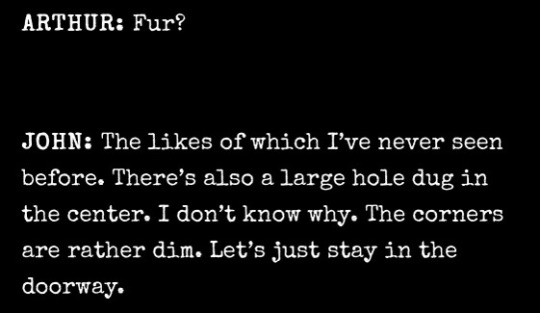
Inhabitants thought to be "departed" but clearly still very much still here...

I don't know. Could be an allusion to the fiery tombs of the living dead. Hard to say.
It's hard to know where he was going with this portion, honestly. I get the impression that something might have been headed off by an audience decision here, so idk where it would have gone if it had found its logical conclusion. The souls in the sixth circle can see the future (but not the present), so it could have been something pretty cool.
Ah, well. Hard to know.
I'll get back to more solid ground. The ninth circle.
The ninth circle of Hell, home of traitors (including Satan himself), is one of the most well-known parts of the poem. At the bottom of Hell is, quite infamously, a frozen lake of ice.

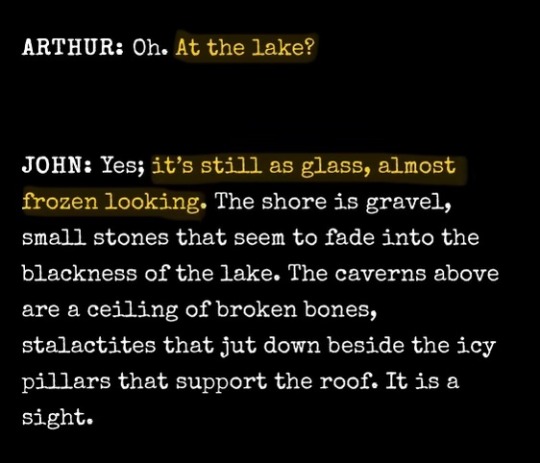

I mentioned poor Ugolino before, but there are other prisoners of the ice who are also very interesting.
One in particular, Branca d’Oria, seems thematically important. This was kind of a weird addition to Dante's Hell. See, Branca d’Oria was a real-live person who was still alive when this was written. How is a living person in Hell? Well, Dante asked him that in the poem, too.
According to The Inferno, Branca d’Oria's crime (the murder of his father-in-law) was so terrible that his soul was taken down to Hell while he was still alive, and his soul was replaced with a devil who took control of his body.
(If you think that a simple murder doesn't seem worse than all the other stuff in Hell, I guess... this is kind of Dante being a true crime girlie...?)
Regardless of Dante's writing choices, I think you can see why this one caught my eye. Once Arthur and John get to the lake of ice, their imminent confrontation with the KIY has them both wondering if just that will happen to Arthur. Will a devil (John) take control of his body and cast his soul out?
There are a lot of passages of Dante that are concerned with the attachment of the soul to the body, so I'll probably do an entire post on that. Lot of stuff about whether souls can be severed from their mortal form, whether they can be replaced by other spirits, etc.
Kayne specifically brings up this question (as does the KIY) in the lake of ice, which brings me to the other really fascinating part of the ninth circle.
Caina.
(Yes, named for that Cain.)
Caina is the portion of the lake of ice that is reserved specifically for people who have killed family members. It's part of the realm of traitors, not murderers, and is considered particularly heinous. Dante finds two brothers who are being punished by being quite literally frozen together.
(Again, two souls, one body, one whole, there's a vibe here.)
I talked a little bit about Kayne before... I don't think he's bound to this part of the Inferno, or even an organic part of it, but I do think that he's consciously playing along with it. After all, he chose to meet Arthur and John in the frozen lake. He chose to call himself Kayne. It's not his real name. That seems pretty clear. But it's what he chose to call himself.
He lured Arthur in with the music box symbolizing his dead daughter. He dirtied it with blood. He purposefully leaned into Arthur's guilt about "murdering" his daughter. And he called himself Kayne.
Feels pointed to me.
And I do think Kayne very certainly belongs in the ring reserved for traitors. lmao. I cannot imagine that he's not fucking the two of them over somehow.
Side note, I'd also say that the description of amphitheater-like rooms feels like an allusion to the Inferno right there. Its circles are shaped like an amphitheater with the lake of ice right in the center!
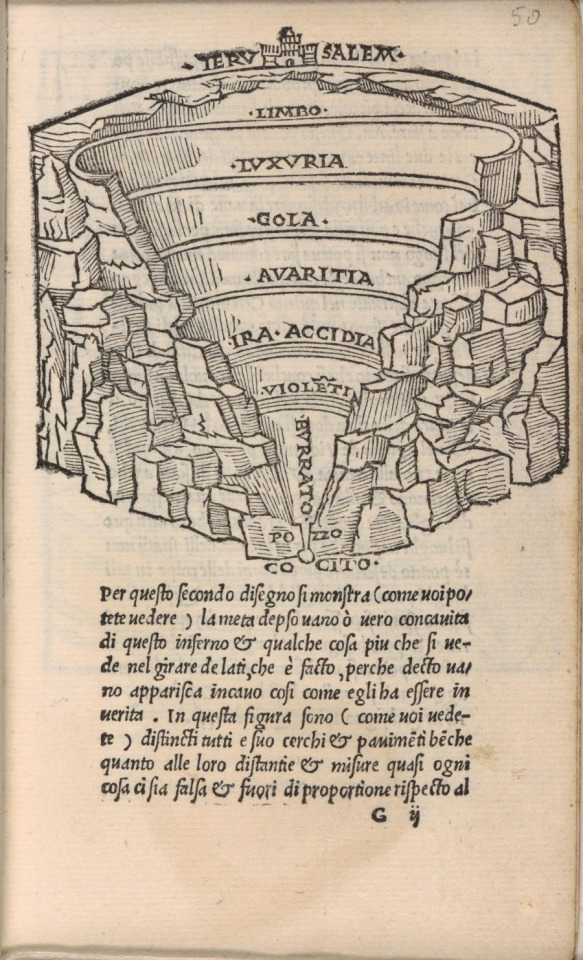
And just to be clear, it points both up and down. When they get to Satan and fly past him, the same shape is going out the other way. (Through the earth's core.)
The final really big allusion to Dante is not an allusion to the Inferno at all, but to Purgatorio/Paradiso. I am speaking, of course, of the garden.
A garden that his followers can't enter... A garden where things are presumably safe... A garden where Arthur finally comes to true understanding...
I mean. It's Eden, right? Of course it's Eden.
And Arthur, in his own way, is partaking of the fruit.
Eden is actually where Purgatorio ends and Paradiso begins, in Dante's travels. There's... a lot to be said here, about "Earthly Paradise", as it's called in Dante, and how it's a symbol of regaining innocence, its connections with Beatrice, etc. But I'll leave that for another post.
The reason why it's important here, though, is that it symbolizes an escape from Hell. It's what Dante found after going through all the punishments of Hell, after meeting Satan, after regaining his metaphorical innocence. It's what the KIY was dangling in front of Arthur as escape, both from the Dreamlands and his own guilt.
The fact that it was used to manipulate, to hurt, to fake Arthur out, is actually such an interesting twist on the source material. I kind of love it.
(I'll also just say real quick that I believe that the selenine (while existing as a cure-all in other Lovecraft literature) is actually a parallel to the waters of Lethe, which can also be found in Dante's Earthly Paradise. This is water that makes you forget your past and all past sins so you can become purified and continue on to heaven! Or get your ass snatched by the King in Yellow! I'll talk about this more later!)
And then... y'know, there's Daniel.
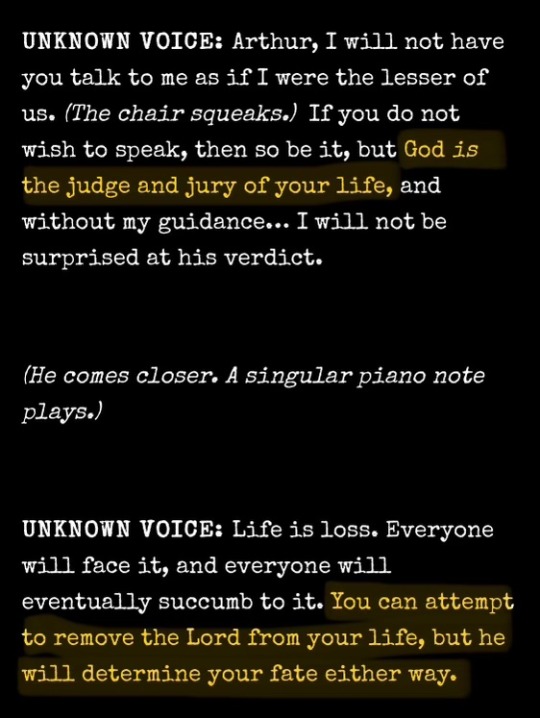
I have a lot to say about Daniel in the future, but for now... I think this is what it all kind of boils down to.
Like yes... on a surface level, there are a lot of Dantean punishments in this book. Yes, Arthur starts rambling about the Minotaur, who guards the seventh circle of Hell. Yes, there are tons of little asides and allusions to the cosmology of this universe.
But I think this here is the key. This whole dream is about judgment from a god that Arthur no longer believes in and absolution that will never come.

Arthur is, quite frankly, out of options. He's been clinging to this guilt and shame for a very long time now, and he sees no real possibility for forgiveness from God or anyone. Only punishment.
So... the KIY gives him God's punishment. But do the tortures of the Inferno really make Arthur come to terms with his own guilt? Not in the way the KIY wants, obviously, but... I mean, I do think there is some growth there. I just don't think it came from the torture.
Arthur wanted to be tortured. He thinks he deserves to be tortured. To be punished. That comes up... many times throughout the podcast. But it isn't punishment that helps him come to terms with his own actions, that help him come to live quietly with his guilt.
It's love.
And Dante's Inferno, at its heart, is about love. According to Dante, the deepest depths of Hell are frozen because ice is the lack of warmth, and a lack of warmth is the lack of love.
Because here's what Dante's Commedia is about, from beginning to end. Dante is having a crisis of faith and his lost love, his dear deceased Beatrice, orchestrates this journey (and eventually becomes his guide) from her place in heaven and saves his soul on earth -- through her love.
I'll talk about this more later, I swear I will, but for now... The KIY gave Arthur the Hell he thought he deserved because he wanted Arthur to find grace through penitence. The King wanted Arthur to give up his past so he could steal his future.
But what Arthur actually gleaned from this awful experience is perhaps closer to what Dante actually intended his message to be. That closing yourself off from others, that hurting others, that betraying others, these are all the worst sins. In the end, it's a violation of human connection that will damn you.
And the only real way to salvation is through love.
I feel like in some ways this is the largest allusion of all, opaque as it is. This is what the entire poem is about. Not just gawking at punishments but finding growth through love.
It's about learning that shame can't fix you, y'know? Love and support are an awful lot more effective if you truly wish to change.
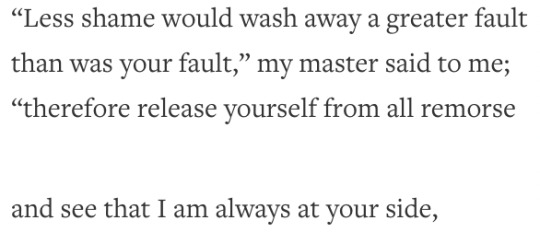
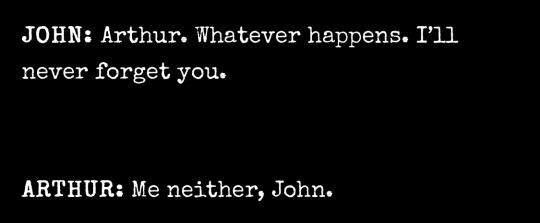



And that, my friends, is Dante's Divine Comedy. :')
#literary analysis like this is the equivalent of giving me a kong toy full of peanut butter jsyk#malevolent podcast#long post#really really long post
20 notes
·
View notes
Text
Yom Yerushalayim 2023
Today, Friday the 19th of May, is Yom Yerushalayim, the 56th anniversary of the reunification of Jerusalem during the Six Day War in 1967. Like many of you, I’m sure, I remember the events of those days in June, if not quite as though they were yesterday, then at least not as though they were more than half a century ago. But our sense of what Yom Yerushalayim is about has changed over the years, and not so much for the better: in 1967, when the Old City of Jerusalem had been in Jordanian hands for less than two decades (i.e., from when it was lost to the Jordanian Army in 1948 until it was recaptured from that same army in 1967), it felt like a momentary wrong was being righted, like something bad that happened within almost every adult-at-the-time’s lifetime had been fixed and made right. But as the years have passed, we have lost control of that narrative. And, indeed, to read in the press and in the blogosphere about what Yom Yerushalayim really means, the fact that there had been a Jewish presence in the Old City since Ottoman times—and for millennia before that as well—has been forgotten and been replaced with a narrative of conquest and taking-while-the-taking-was-good adventurism. In this narrative, Israel was at war with Jordan, Syria, and Egypt in 1967 and won an incredible victory over all three foes simultaneously, which led to seizing treasures from them: the Golan Heights from Syria, the Sinai from Egypt, and—best and most sacred and important of all—the traditional Jewish heartland of Judah and Samaria from Jordan…including the jewel in that specific crown, the Old City of Jerusalem.
That narrative, which makes Yom Yerushalayim more about the spoils of war and hardly at all about the justification of a wrong that had been perpetrated by the Kingdom of Jordan against the Jewish people for all nineteen years of Israeli independence, is the one I see featured on the pages of the world’s newspapers and on the websites I generally visit to gain as balanced a picture of the world as I can.
I’d like to remember out loud my first visit to Jerusalem, a story I haven’t actually written about before.
It was 1966, the year of my bar-mitzvah. I was a little boy on the cusp of adolescence. As it happened, the summer camp I had been attending in Connecticut on the verdant shores of Lake Oxoboxo closed permanently just the year before. My parents, therefore, had to find some new place for me to spend the summer and, somehow, my mother came across something called the Bar-Mitzvah Pilgrimage that was being offered to the public by the American Zionist Youth Foundation, headquartered in those days at 515 Park Avenue. This was highly uncharacteristic of my parents even to consider: I was not yet allowed to go into Manhattan on the subway by myself (when this was being considered, I was still twelve years old), and here they were considering sending me to the other side of the world in the company of people neither of my parents knew or had ever met. Given the level of protectiveness my parents brought to parenting, it was—to say the very least—uncharacteristic for them even to consider, let alone agree, that I sign on to such an adventure.
And yet they pursued it. I remember the interview I had at 515 Park. A nice man whose name I can’t remember gently probed our reasons for wanting to sign me on. He seemed sympathetic, interested primarily in determining if this was a good idea for as untried and untested a lad a myself. I must have made a good impression because he approved me to sign on. And then, far more amazingly, my parents did sign me on. And off I went. I don’t believe I had ever been in an airplane until that summer. And I certainly hadn’t ever left the United States. This was, and in a dozen different ways, terra totally incognita for me. And for them too, I suppose.
There’s a lot to say about that whole summer, about the youth village near Pardes Hanna that served as our base, about the friendships I made that summer, about the encounter—my first, as far as I can recall—with actual Israelis (i.e., the kind that actually live in Israel, not the Forest Hills version), about our visit to Yad Vashem (a story I’ll write about on a different occasion), about the strange journey I made all on my own to Ashkelon to spend a weekend with a family of recent Moroccan immigrants chosen (by whom I have no idea) as a reasonable host family for kids like myself despite the fact that no one in the household knew a word of English and my Hebrew-School Hebrew was, to say the very least, limited.
The high point of the journey was our trip to Jerusalem. They waited a week or so—perhaps for jetlag to fade and for us acclimate ourselves to the heat of an Israeli summer—and then we were off. Approaching the city from the west along a road still dotted with blown-up armored vehicles and tanks left in place as a kind of on-site memorial to the men and women who died in 1948 defending the city that the nascent State of Israel had chosen as its capital, I was enthralled even before we got there. And the emotional level of the whole experience only increased once we actually entered the city.
For readers who have been to Jerusalem recently, it would probably be hard to conjure up the correct picture of the city in 1966. Jaffa Road, the main street leading through downtown to the Old City was paved. But there were unpaved streets all over the place. There was no light rail, just the bus. There were public telephones, but you needed special tokens called asimonim to operate them and it was rare to find one that was in working order. The bus station was more like an oriental bazaar than the Port Authority. I’m sure groups that take teenagers abroad these days protect them much more carefully and seriously, but we were permitted to go off on our own all the time. Nor were we required to go off with others; anyone inclined to explore on his or her own was permitted to go off alone. (This was, of course, long before cell phones so there actually was no way to contact any of us once we were all dispersed; the system—to the best of my recollection—was simply to wait at the bus until everybody showed up and then to depart. I don’t recall anyone ever not showing up or getting into trouble while off on his or her own. But I don’t see that being permitted today. (If I remember correctly, I attempted to smoke my first cigarette, a Time, when I was off with some of the other lads on our own wandering the city. Fortunately for my future health, it did not go well at all. We were staying at the Hotel Vienna, a fleabag that I remember thinking my parents wouldn’t set foot in, let alone take a room for the night. But that, of course, only made it more alluring to us boys. This truly was my first great adventure, my first foray into the world beyond Queens. And I was totally sold on the whole thing from the first moment we set foot on Israeli soil.)
But wandering around what was then called the “New City,” came after our first experience of the Old City.
Of course, we could not enter Old Jerusalem, which was in a different country at the time. Or at least under the control of a different country. (One interesting detail I do recall clearly, is that the word “Palestinians” was never used to describe anyone at all; our counselors and teachers referred to the people on the other side of the border as Jordanians or, more generally, as Arabs. The thought that the Arabs of Palestine were anything other than Jordanians I don’t recall anyone expressing ever.)
Our first encounter with the Old City was a visit to the Mandelbaum Gate, the sole access point from Israel to Old Jerusalem. It lives in our collective memory as a symbol of the divided city and that is not at all wrong—but the reality was that it wasn’t much of anything: just a ramshackle link fence with a gate set into it under some tin roofing. There were IDF soldiers on the Israeli side, but you could look through the gate—which was open when we were there—to see Jordanian soldiers and, beyond them, the walls of the Old City. So that was exciting too—I hadn’t ever been at a land border between nations.

To see into the Old City was a different experience, however. We were brought to the top of a six- or seven-story building at the bottom of Jaffa Road, now called Kikar Tzahal, and taken up in an elevator to the roof. And there, for a few coins, you could operate long-distance telescopes like the ones they used to have atop the Empire State Building and so look at the Jaffa Gate in the distance and, slightly, what lay beyond it.
There wasn’t much to see. The famous honey-colored walls looked more white than yellow in the strong sunshine. The gate, the famous Jaffa Gate, was visible, but you could only see a sliver of anything on its other side. There were, I think I recall, some vendors hawking their wares on the outside of the gate and those people we could see almost clearly. It feels as though it should have been a huge disappointment to me, that whole experience: a wall, a big gate, some people selling snacks, the occasional Jordanian soldier. And you didn’t get much time for your coin either: maybe a minute or two. Maybe three. Not more.
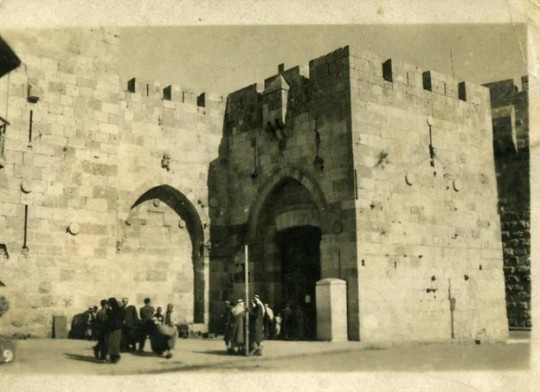
So you probably expect me to say how disappointing the whole experience was, especially after having had it hyped so intensely on our way into the city. But it wasn’t disappointing at all. Something within me changed at that specific moment in the trajectory of my adolescence, something that at the time I doubt I could possibly have understood or even identified. My connection to that place—and specifically to the Old City of Jerusalem—was somehow set in stone on that rooftop in 1966. I can’t say how I could have known, but I somehow did know that my life was destined to revolve around that city and that gate, around that place. We weren’t there long. We ended up, if I recall, me and my friends, eating felafel in the Machane Yehudah open-air market, a nice walk straight down Jaffa Road. But some switch had been flicked on, something within me had been permanently and irrevocably altered. I couldn’t have said it in so many words as a lad of thirteen. But when I think back on the story of my life to date, I believe that my destiny to spend the years of my life as a rabbi, as someone to whom Zionism and Judaism would be such allied concepts that neither could possibly exist without the other, as someone whom destiny led to acquire the home in Jerusalem that Joan and I proudly own—the first step on that path I took then and in that place.
I remember that whole summer very fondly. And I look forward to getting back to Jerusalem in just a month and a half. A lifetime has passed since my first visit to Jerusalem. No one today has the kind of experience I had then. But I am richer for having had it. And so I share it with you today as a kind of Yom Yerushalayim gift to you all.
0 notes
Photo

スパーク/オブライエン 集英社版世界の文学16 訳者=小野寺健・大澤正佳、編集=綜合社 集英社 装幀=坂野豊 編集委員=川村二郎・菅野昭正・篠田一士・原卓也・丸谷才一 スパーク:「マンデルバウム・ゲイト」小野寺健・訳 オブライエン:「ドーキー古文書」大澤正佳・訳
#スパーク/オブライエン 集英社版世界の文学16#集英社版世界の文学#muriel spark#ミュリエル・スパーク#the mandelbaum gate#マンデルバウム・ゲイト#flann o’brien#フラン・オブライエン#the dalkey archive#ドーキー古文書#小野寺健#大澤正佳#坂野豊#anamon#古本屋あなもん#あなもん#book cover
0 notes
Photo

Dame Muriel Sarah Spark DBE FRSE FRSL was born on February 1, 1918. She was a British novelist, short story writer, poet and essayist.
Spark began writing seriously, under her married name, after World War II, beginning with poetry and literary criticism. In 1947 she became editor of the Poetry Review. This position made Spark one of the only female editors of the time. Spark left the Poetry Review in 1948. In 1953 Muriel Spark was baptised in the Church of England but in 1954 she decided to join the Roman Catholic Church, which she considered crucial in her development toward becoming a novelist. Penelope Fitzgerald, a fellow novelist and contemporary of Spark, wrote that Spark "had pointed out that it wasn't until she became a Roman Catholic... that she was able to see human existence as a whole, as a novelist needs to do". In an interview with John Tusa on BBC Radio 4, she said of her conversion and its effect on her writing that she "was just a little worried, tentative. Would it be right, would it not be right? Can I write a novel about that – would it be foolish, wouldn't it be? And somehow with my religion – whether one has anything to do with the other, I don't know – but it does seem so, that I just gained confidence." Graham Greene, Gabriel Fielding and Evelyn Waugh supported her in her decision.
Her first novel, The Comforters, was published to great critical acclaim in 1957. It featured several references to Catholicism and conversion to Catholicism, although its main theme revolved around a young woman who becomes aware that she is a character in a novel.
The Prime of Miss Jean Brodie (1961) was even more successful. Spark displayed originality of subject and tone, making extensive use of flashforwards and imagined conversations. It is clear that James Gillespie's High School was the model for the Marcia Blaine School in the novel. Her residence at the Helena Club was the inspiration for the fictional May of Teck Club in The Girls of Slender Means published in 1963.
Spark received the James Tait Black Memorial Prize in 1965 for The Mandelbaum Gate, the US Ingersoll Foundation TS Eliot Award in 1992 and the David Cohen Prize in 1997. She became an Officer of the Order of the British Empire in 1967 and Dame Commander of the Order of the British Empire in 1993 for services to literature. She was twice shortlisted for the Booker Prize, in 1969 for The Public Image and in 1981 for Loitering with Intent. In 1998, she was awarded the Golden PEN Award by English PEN for a "Lifetime's Distinguished Service to Literature".
Spark received eight honorary doctorates including Doctor of the University degree (Honoris causa) from her alma mater, Heriot-Watt University in 1995; a Doctor of Humane Letters (Honoris causa) from the American University of Paris in 2005; and Honorary Doctor of Letters degrees from the Universities of Aberdeen, Edinburgh, London, Oxford, St Andrews and Strathclyde.
In 2008, The Times ranked Spark as No. 8 in its list of "the 50 greatest British writers since 1945". In 2010, Spark was posthumously shortlisted for the Lost Man Booker Prize of 1970 for The Driver's Seat.
Bibliography
Novels
The Comforters (1957)
Robinson (1958)
Memento Mori (1959)
The Ballad of Peckham Rye (1960)
The Bachelors (1960)
The Prime of Miss Jean Brodie (1961)
The Girls of Slender Means (1963)
The Mandelbaum Gate (1965)
The Public Image (1968) – shortlisted for Booker Prize
The Driver's Seat (1970)
Not To Disturb (1971)
The Hothouse by the East River (1973)
The Abbess of Crewe (1974)
The Takeover (1976)
Territorial Rights (1979)
Loitering with Intent (1981) – shortlisted for Booker Prize
The Only Problem (1984)
A Far Cry from Kensington (1988)
Symposium (1990)
Reality and Dreams (1996)
Aiding and Abetting (2000)
The Finishing School (2004)
Other works
Tribute to Wordsworth (edited with Derek Stanford, 1950)
Child of Light (a study of Mary Shelley) (1951)
The Fanfarlo and Other Verse (1952)
Selected Poems of Emily Brontë (1952)
John Masefield (biography, 1953)
Emily Brontë: Her Life and Work (with Derek Stanford; 1953)
My Best Mary (a selection of letters of Mary Shelley, edited with Derek Stanford, 1953)
The Brontë letters (1954)
Letters of John Henry Newman (edited with Derek Stanford, 1957)
The Go-away Bird (short stories, 1958)
Voices at Play (short stories and plays, 1961)
Doctors of Philosophy (play, 1963)
Collected Poems I (1967)
Collected Stories I (1967)
The Very Fine Clock (children's book, illustrations by Edward Gorey, 1968)
Bang-bang You're Dead (short stories, 1982)
Mary Shelley (complete revision of Child of Light, 1987)
Going Up to Sotheby's and Other Poems (1982)
Curriculum Vitae (autobiography, 1992)
The French Window and the Small Telephone (limited edition, 1993)
Complete Short Stories (2001)
All the Poems (2004)
Spark died in 2006 and is buried in the cemetery of Sant' Andrea Apostolo in Oliveto.
Daily inspiration. Discover more photos at http://justforbooks.tumblr.com
16 notes
·
View notes
Photo
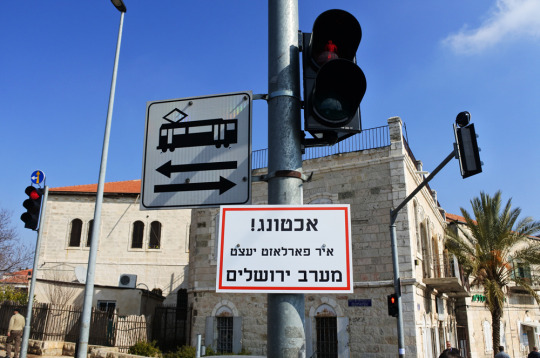

'Caution! You are now leaving West Jerusalem’ (Yiddish) 2017, Installation Jerusalem, Israel © Sebestyén Fiumei
#sebestyén fiumei#jerusalem#שבי פיומאי#art installation#art in public space#israel#yiddish#art#contemporaryart#אומנות#west jerusalem#east jerusalem#green line#הקו הירוק#خط أخضر#mandelbaum gate#שער מנדלבאום#بوابة ماندلباوم#ירושלים#الْقُدْس#mea shearim#מאה שערים#الشيخ جراح#אידיש#יידיש
0 notes
Text
Craft beer names, invented by neural network

With over 4,000 craft breweries in the United States alone, people are having trouble finding unique names for their beers. That’s a problem, because when two breweries accidentally use the same name, it results in potential confusion at best and at worst, a legal battle. Litigation over craft beer trademarks is noticeably on the rise.
I decided to find out whether a neural network can help.
A neural network is a type of computer program that, among its many talents, can learn to imitate datasets just by looking at enough examples. I’ve used them to name kittens, metal bands, Pokemon, paint colors, and more.
I knew I wanted to train the neural network separately for different kinds of beers. Different categories of beers have their own distinct naming conventions; in theory, you should roughly be able to tell a stout from an IPA from a double IPA by the name alone.
Ryan Mandelbaum of Gizmodo sparked this project by putting me in touch with Andy Haraldson, who very generously provided me with a huge dataset of hundreds of thousands of beer names that he extracted from BeerAdvocate.com. There were over 90 types of beer in the full dataset (for example, black ales, belgian dark ales, euro dark lagers, schwarzbier, dark wheat ales, and english mild dark ales). To make the task manageable (and to combine a few datasets that only had a few hundred unique names) Eva Gulotty sorted them into broader groups. And then I set the neural network to work on each category.
It worked. The neural network produced unique names that were plausible, or weirdly awesome, or so outlandish that they sounded like the sort of beer you could only buy after a multi-day scavenger hunt involving hang gliding, codebreaking, and Fairbanks, Alaska.
I give you: craft beer names, invented by neural network.
IPAs
Dang River Earth Dock IPA Yamquak Bigly Bomb Session IPA Binglezard Flack Jain Is The Dog Earth 2 Sanebus Tower Of Ergelon Toe Deal Juicy Dripple IPA Flying Rocks IPA Yall In Wool Earth Pump Heaven Cat Heart Compost Wicked Geee Text 5 Of The IPA Cockamarin Hard IPA Test Tha IPA Yampy Widee Banger Fripper IPA Oarahe Momnila Day Revenge Bass Cornationn Yerve Of Aterid Ale
Strong Pale Ales (Doubles, Triples, etc)
The Great Rebelgion Trippel Lock Thick Back The Fraggerbar Dankering Third Maus Sip's The Stunks Belgian Tripel Slambertangeriss Third Danger Track Of The Wind Devil's Chard Spore Of Gold The Actoompe Brother Panty Tripel The Oldumbrett's Ring The Vunker The Finger Gunder Of Traz Cherry Boof Cornester Strange Fast Drammnt Humple La Bobstore Barrel Aged Thrennt Rem Wine Barrel Aged Monkay Tripel
Amber Ales
Snarging Red Warmel Halce's Comput Ale Fire Pipe Blangelfest Stoodemfest La Cat Tas Oo Ma Ale Ole Blood Whisk Frog Trail Ale Ricias Donkey Brain Sacky Rover Gate Rooster Cramberhand O'Busty Irish Red Helusto's Humpin' Red The Hunty Rickin Organic Red Deaath River Smush Hoppy Amber Ale Rivernillion Amber Special North Wish Leifstic Imperial Red Ambre O Woo's Omella Imperial Red Ale
Stouts
I The Moon The Bopberry Stout Cherry Coconut Mint Chocolate Stout Black Morning Sir Coffee Shock State Take Bean Single Horde Whata Stout Shany Lace Black Sink Stout Barrel Aged Chocolate Milksmoke Shump Morning Dave - Vanilla Coffee Stout Avidberry Dark Thomblan Jrankers Java Stout Spulgican's Chocolate Coconut Pamper Cherry Trout Stout Bold Oot Stout Pimperdiginistic The Blacksmith W/ Cherry Stout
(Beer label templates from http://www.grogtag.com/)
2K notes
·
View notes
Text
Israelis Seize Gaza, Push South in Sinai
uncredited writer, The New York Times, 7 June 1967
Major Mideast Developments On the Battlefronts The war between Israel and the Arab nations raged through its second day as the Israelis moved with surprising swiftness into Jordan and the Sinai Desert.
The Israelis swept around the Jordanian sector or Jerusalem, including the Old City, and dominated roads into the city. Israeli columns went through Mandelbaum Gate and reached Mount Scopus.
Other Israeli troops reported the capture of Gaza, a deep thrust in Sinai toward Port Said and, farther south on the peninsula, a drive past Kuntilla toward the approach to the Gulf of Aqaba.
Syrian artillery pounded Israeli settlements north of the Sea of Galilee and Damascus claimed the capture, of Shear-Yashuv, but the Israelis denied this.
In the Capitals In Cairo, President Nasser ordered the Suez Canal closed and broke diplomatic 'relations with the United States. He charged that United States and British air units had intervened in, the war, changing its complexion.
In Washington, the Government immediately denied this and broke with Cairo. London denied it, too, and denounced the halting by Arab producers of oil supplies to Britain and the United states.
In Tel Aviv, Premier Eshkol appealed in a personal. message to Premier Kosygin to join in an effort to secure peace "based on the independence and territorial integrity of all nations."
At the United Nations, the Security Council adopted a resolution calling for an immediate cease-fire.
#six day war#military action#middle east#israel#eygpt#united arab republic#syria#1967#1960s#sixties#60s
2 notes
·
View notes
Note
@NAC you had a list of books on your old page of recommended readings...but I can't find it now. Could you repost it?
I assume you mean this one ( I have this list on my web page with links included for the public domain stuff I could find…I try to keep it updated as I think of new things or find new ones.)
Young adult/childrenThe Little Prince by Saint-ExuperyWhere the sidewalk ends by SilversteinElla Minnow Pea by DunnSophie’s World by GaarderThe Great Good Thing by TownleyThe Jungle Book by Kipling Bridge to Terabithia by DiamondThe Westing Game by RaskingLillies of the Field by BarrettFlowers for Algernon by KeyesThe Wrinkle in Time Series(Wrinkle In Time, Wind in the Door, A Swiftly Tilting Planet) by Madeleine L’EngleThe Dark is Rising Series by Susan CooperThe Tripod Trilogy by John ChristopherThe Hobbit by TolkienCoraline by Neil GaimanEyes of the Dragon by Stephen KingThe Original Shanara Trilogy (Sword, Elfstones, Wishsong) and Landover (Magic Kingdom for Sale, SOLD!, The Black Unicorn, Wizard at Large, The Tangle Box) by Terry Brooks by Elizabeth GeorgeThe Witch of Blackbird PondAdventures of Tom Sawyer by Twain
Literature Winter’s Tale, A Soldier of the Great War, Freddy & Frederika by Mark HelprinShakespeare (Especially Othello, King Lear, Much Ado About Nothing, Twelfth Night, Tempest, Henry IV parts 1 & 2, Henry V, sonnets) Iliad Odyssey by Homer (I like the Fagles translation)Sophocles–Oedipus Trilogy , , Philoctetes , Women of Trachis Orestia by Aeschylus Medea by Euripides Victor HugoLes Miserables The Hunchback of Notre Dam by Hugo A Tale of Two Cities by Dickens To Kill A Mockingbird by LeeWuthering Heights by Emily Bronte Jane Eyre by Charlotte Bronte Complete works of Faulkner ( esp.The Sound and the Fury, Light in August) by FaulknerHoward’s End by Forster Diary of a Young Girl by FrankThe Scarlet Letter by Hawthorne Catch 22 by HellerGone with the Wind by MitchellFrankenstein by Shelley The Portrait of Dorian Gray , Importance of Being Earnest , An Ideal Husband by WildeThe Time Machine by Wells A Raisin in the Sun by HansberryNight by WieselThe Glass Menagerie by WilliamsThe Devil’s Disciple by ShawA Man for All Seasons by BoltCyrano de Bergerac by Ronstad (unless you speak French only the Hooker translation)Dracula by Stoker Inherit the Wind by Lawrence and LeeMagnificent Obsession by DouglasSilas Marner by George Eliot Decameron –Boccaccio A Modest Proposal—SwiftSelf-Reliance, The American Scholar, Experience—EmersonUp from Slavery—Booker T. Washington
PhilosophyA History of Knowledge by Van DorenThe Cave and the Light by HermanPlato (Euthyphro , Apology , Gorgias , Crito, Phaedo , Symposium , Republic )Aristotle (Metaphysics , Nicomachean Ethics , Eudemian Ethics , Politics , Rhetoric , Poetics )The History of Philosophy by CoplestonDiscourses on Livy by Machiavelli Ethical and Political Writings of St. Thomas AquinasAristotle for Everybody, 10 Philosophical Mistakes, The Great Ideas, How to Read A Book by AdlerCicero (On the Gods , On Duties , 1st and 2nd Philippics Superheroes and Philosophy edited by MorrisBuffy The Vampire Slayer and Philosophy edited by South
HistoryHistory of the Ancient World, Medieval World, Renaissance World by Susan Wise BauerThe Forgotten Man, Coolidge by ShlaesHistory of the Peloponnesian Wars by Thucydides John Adams by McCulloughFrom Dawn to Decadence by BarzunPlutarch’s Lives Cicero, Augustus by EverittLetters of John and Abigail Adams Washington by Ron ChernowThe Glorious Cause by Robert MiddlekauffLost Enlightenment by StarrReagan’s War by SchweizerPatriot’s History of the United States by Schweikart and AllenThe closing of the Muslim Mind by ReillyThe Rise and Fall of the Third Reich
Economics/PoliticsWho Really Cares and The Road to Freedom by Arthur BrooksThe World is Flat by Thomas FriedmanDave Barry Hits Below the Beltway by BarryDemocracy in America by de Tocqueville The Law by Bastiat The Upside of Down by McArdkeSpirit of the Laws The Federalist Papers Adam Smith (Theory of Moral Development , Wealth of Nations )My Journey by BlairThe Conscience of a Conservative by GoldwaterLocke (Second Treatise of Government , A Letter Concerning Tolerance )Parliament of Whores, Eat the Rich, On Wealth, Peace Kills by O’RourkeIn Defense of Globalization by BhagwatiNovus Ordo Seclorum by McDonaldBasic Economics, Civil Rights by SowellThe Next 100 Years by FriedmanThe Mystery of Capital by de SotoThe Road to Serfdom by HayekCapitalism and Freedom and Free to Choose by FriedmanNew Threats To Freedom edited by BellowA Philosophical Enquiry into the Sublime and Beautiful; Reflections on the Revolution in France by BurkeThe General Theory by KeynesThe Origins of Political Order, Political Order and Decay by FukuyamaBourgeois Virtues, Bourgeois Equality, Bourgeois Dignity by Deirdre McCloskeyCapital by Marx The Conservative Mind by Kirk
Other nonfictionPower of Myth by Joseph CampbellThe Universe in a Nutshell by HawkingFreakanomics by Levitt & DubnerThe Art of War by Sun TzuScratch beginnings by ShepardThe Tao of Physics by CapraShadowplay by AsquithHuman Excellence by MuarryThe Better Angles of Our Nature by Pinker48 Laws of Power by GreeneThe Story of Western Science by Bauer
Pleasure readingMan in the High Castle by DickBeat to Quarters, Ship of the Line, Flying Colours by ForesterThe Road to Gandolfo, Bourne Trilogy by LudlumBig Trouble by BarryEaters of the Dead, State of Fear by CrichtonRed Storm Rising by ClancyI, Claudius by GravesThe Walking Drum by L’AmourGates of Fire by PressfieldThe Scarlet Pimpernel by Ozcry It and The Green Mile by KingThe Agony and the Ecstasy by StonePillars of the Earth by FollettThe Historian by KostovaGrail Quest by CornwallThe Thirteenth Tale by StterfieldLamb, The Lust Lizard of Melancholy Cove, Vampire Trilogy, The Stupidest Angel and Fool by Moore
Sci fi/Fantasy Mists of Avalon, The Forrest House by Marion Zimmer BradleyThe Wheel of Time by Robert Jordan (et. al)Dune Series by Frank Herbert (et. al)The Sword of Truth Series by Terry GoodkindWorks of Robert Heinlein (esp. Stranger in a Strange Land, Puppet Master, Starship Troopers, Moon is a Harsh Mistress, and Double Star)Good Omens by Gaiman and PratchettWatership Down by AdamsEnder’s Game by CardAmerican Gods by GaimanAnthem, Atlas Shrugged by RandHitchhiker’s Guide to the Galaxy by Adams1984 by George Orwell2001–Clarke
Spiritual The Robe by DouglasLost Horizon by HiltonGod Talks with Arjuna: The Bhagavad Gita by YoganadaThe Second Coming of Christ by YoganandaThe Tao Te Ching (best to read at least two translations)The Alchemist, Veronica Decides to Die by CoelhoAutobiography of a Yogi by YoganandaEvidence of the Afterlife by LongA Course in MiraclesThe Messengers by IngramThe Celestine Prophecy by RedfieldLife before Life by TuckerJonathan Livingston Seagull and Illusions by BachSiddartha by HesseKoranThe Book of CertitudeHoly BibleBook of Mormon
PoetryThe Prophet, The Broken Wings, Song of Man by GibranLeaves of Grass by Whitman (esp. Preface, Song of Myself, I hear America Singing, Corinna’s Going A-Maying,When I Heard the Learn’d Astronomer, O Me! O Life!, O Captain! My Captain!)Works of Tennyson (especially The Lady of Shalott, Ulysses, Charge of the Light Brigade, For I dipped into the Future, In Memoriam A.H.H., Crossing the Bar, Ulysses)Works of T.S. Eliot (especially The Love Song of J. Alfred Prufrock, Wasteland, Hollow Men, Preludes-, Four Quartets)Divine Comedy by Dante (I like the Mandelbaum translation) Metamorphoses by Ovid Hesperides and Nobel Numbers by Herrick (esp. To the Virgins, to Make Much of Time, Argument of his book, Delight in Disorder, To His Conscience, Upon Julia’s ClothesFaust by Goethe Part I Part II Works of Sappho, Hafiz, Rumi, Li Po, Tu Fu (best to read several translations)Tagore (esp. Gitanjali)Spencer– Amoretti (Sonnets 1,8, 10, 35, 37, 67,68, 70,75, 79)Sidney —Astrophil & Stella (Sonnets 1,6,9,15, 31,39,45,52,69,71,72,87,89,108)The Passionate Shepherd to His Love—MarloweThe Nymph’s Reply to the Shepherd—RaleighShakespeare’s Sonnets (all them)Meditation 17, Holy Sonnet 10, The Bait—DonneTo a Mouse, To a Louse, Auld Lang Syne. A Red Red Rose–BurnsThe Lamb, The Tyger—BlakeRime of the Ancient Mariner, Kubla Khan—ColeridgeShe Walks in Beauty Like the Night, When We Two Parted, Darkness, We’ll Go No More A Roving, When A Man Hath No Freedom to Fight for at Home—ByronA Little Learning is a Dangerous Thing—PopeThe Measure of a Man—UnknownInvictus–HenleyPrayer of St. Francis of Assisi—Unknown (but probably not St. Francis)Ozymandias, The Flight of Love, To—, —ShellyOde on a Grecian Urn, La Belle Dame Sans Merci—KeatsSea Fever–MasefieldMy Last Duchess, Andrea del Sarto, Soliloquy of the Spanish Cloister—BrowningSonnet 43—Barret BrowningRemember, Up-hill, Echo, Promises like Pie-Crust, Lord thou thyself art love,—C.G. RossettiSudden Light, The House of Life, Soul’s Beauty—D.G. RossettiThe New Colossus–LazarusSecond Coming, Sailing to Byzantium, When you are Old, Lake Island of Inishfree—YeatsDo Not Go Gentle Into that Good Night—ThomasWork—Angela MorganThe Highwayman–NoyesCasey at Bat—ThayerJabberwocy, Walrus and the Carpenter, The Hunting of the Snark–CarrollDream Deferred, I too sing America– HughesThe Road Not Taken, Birches, Mending Wall, Fire and Ice, Out, Out–Frost
Short StoriesWilde (The Carterville ghost , The model millionaire , The nightingale and the rose )Poe (Masque of the Red Death . Tell tale heart , Cask of Amontillado , Fall of the house if of usher , The Purloined Letter ,The Thousand and Second Tale of Scheherazade , Pit and the Pendulum , Mertzengerstein , The Duc De L’omlette , The black cat , The Murders of the Rue Morgue , Van Kempelen and his discovery , Mesmeric revelation )Hawthorne (My Kinsman Major Molineux , Young Goodman Brown , Rappacini’s Daughter , Dr. Heidegger’s Experiment , The Snow Image , The Minister’s Black Veil , The Maypole of Merry Mount , The Celestial Railroad , Sister Years , The New Adam and Eve , The Artist of the Beautiful )O. Henry ( Lickpenny Lover , The Gift of the Magi ,After Twenty Years , The Last Leaf , The Cop and the Anthem , The Clarion Call , The Skylight Room , The Buyer from Cactus City , The Duplicity of the Hargraves , The Furnished Room , Witches loaves , The Third Ingredient , Spring time a la Carte , The Green Door , By Courier, The Romance of the Busy Broker, One Thousand Dollars, Tobin’s Palm)Lovecraft—(The Cats of Ultar , The Outsider , Beyond the wall of sleep , Hypnos , The call of Cuthulu , Dunwich horror , Dagon)EM Forrester (The Other side of the Hedge , The Machine Stops )Edith Wharton –The fullness of life Collins–Mr. Lismore and the Widow Bradbury—Exiles, Sound of thunderHans Christian Anderson –( In a thousand years , Little mermaid )Ambrose Bierce–Occurrence at owl creek bridgeConnell–The most dangerous game Thousand and One nights–Aladdin and his magic lamp The necklace by Maupassant Anthony Hope–The Philosophy in the Apple Orchard Doyle (The Red Headed League , Scandal in Bohemia)Gilman–The Yellow Wallpaper Harrison Bergeron by VonnegutThe story of an hour by Kate Chopin The Lottery by Shirley Jackson Rikki tiki tavi by KiplingThe ones who walk away from Omelas by Le Guin Bartley the scrivener by MelvilleThe lady or the tiger by Frank Stockton Abbot–FlatlandJericho Road by Henry van dyke Henlein– (The Unpleasant Profession of Jonathan Hoag, All you zombies, By his bootstraps, Waldo, Beyond this horizon)Philip K. Dick (We can remember it for you wholesale, Paycheck, Second Variety, The Minority Report, The Golden Man, Variable Man)William Faulkner (A Rose for Emily, The Tall Men, Shingles for the Lord, Shall not Perish, Elly, Uncle Willy, That will be Fine, That Evening Sun, Red Leaves, A Justice, A Courtship, Lo!, Ad Astra, All the Dead Pilots, Wash, Mountain Victory, Beyond)Mark Twain (The celebrated jumping frog of Calaveras County, Diary of Adam and Eve)Washington Irving (Sleepy Hollow, , The Devil and Tom Walker )Gelett Burgess–The number Thirteen , The MacDougal street affair Lord Dunsany– The bureau d’exchange de Maux , The Exiles club , The Sword of Walleran The mortal immortal byMary Shelly The Adventure of the Snowing Globe By F. AnsteyThe Sleeper and Spindle by GaimanMark Helprin (Katherine comes to yellow sky, Ellis island, Tamar)
PodcastsThe History of Rome, Revolutions
36 notes
·
View notes
Text
Updated 2017 Faves - carmodance
So i have a ton of asks sitting in my inbox asking me to do an updated list of fave solos or groups etc. so i’m just doing one big post here.
This post includes my fave solos, duo/trios, groups, and then costumes.
I tried to take out all my “maybes” for the solo list since it was already really big, but the other categories have some maybes thrown in, so not everything may make it to my faves video I post on my channel at the end of the season.
Enjoy!
*disclaimer - I’m sure there are great dances I haven’t seen yet! This are just ones I personally enjoyed the most.
Solos - bolded solos are ones i really like!
Logan Hernandez -untitled
Lauren Busyn improv at nuvo Omaha
Kayla Lavine make it rain or running with the wolves
Addison Middleton bang bang choo choo
Ella samellas the tragedy
Alaina bader -You
Brady Farrar hold on
Eva igo improv all coming back to me or river
Maya palmer I dreamed a dream
Christina Gregory mama knows best
Sky mottet freedom
Icesiis magala me too
Bella klassen I'm falling and I can't turn back
Lauryn Ewing prey
Julia dipretoro sangre y Mateo
Kami couch who you are
Madison bunce all I want
Gavin morales pulse
Kalea hidalgo back at my cliff
Sabine Nehls - light of the seven
Kimberly Tobias crazy
MORGAN landrigan fergalicious
Jadyn Saigusa over the rainbow
Audrey Caldwell new world coming
Bostyn brown Would be killer
Quinn starner fire
Peyton Evans warrior
Madison Barnes - not the one
Alex Andrada beautiful world
Phoebe Campbell love me or gimme gimme
AvaRose Campbell diamonds
Nathan Lopez hot gates
Hannah Webb fighter
Haley beck I saw in the moonlight
Cassidy naber - breathe
Savannah kristich - Siva
Brooke cheek do what I love
Zack sommer conviction
Sydney centeno insert text
Paige Glenn dance with somebody
Ashlyn Meldon pyt
Michelle cheng can't do it alone
Simrin player tigers bride
Jamieson model behavior
Bailey holt part 2
Berlynn gonzalez remedy
Gage Davis genie
Kylee Brady material girl
DUO/TRIOS
Never let me go- nick Daniels and Logan Hernandez
Signature dance academy - Beat
The rock- hopak
Bfdc - rhythm of love
The rock center - four sections
WDP- Immortal - Lucy and Megan
Stars r us - dangerous
MVP dance elite - hold your hand
MDP - Paige and Artyon - time of your life
Club Dance – PB&J - Addison and Brooklynn
Avi’s Dance Project – Used to be mine - Berlin Gonzalez and maddie stone
Expressenz - beyond the sea
Quinn and brady - pas de duex
GROUPS
Danceology yeezy
Evolve dance complex- landslide
The rock center- odonata
Project 21 - unbroken
The rage - bang bang
The rage -young and beautiful
P21- dance like yo daddy
Signature dance academy - river
The rock center- 7 nation army
Southern strutt - konnichi pop
Kim Massey dance productions- resolutions
Rhythm dance center- glorious, pink windmills, this is Halloween
Prestige dance company - unsteady
MDP - slipping under
Mdp - maniac
Yycdp -star struck
Yycdp -unmasked
Yycdp - the end
Club Dance - vibeology
Club Dance - did I mention
Club Dance - we run this
Club Dance - isn't she lovely
Club dance - concentrate
Club dance - strings
Club dance - do you love me maybe
Dance connection 2 - it's all coming back
P21 - kind of cruelty
P21 - dangerous
Club dance - pick up the pace
Ocpaa - trendsetter
Larkin dance - happy birthday
Larkin dance - partition
Expressenz - walk like an Egyptian
Expressenz - wind beneath my wings
Shooting stars - eat sleep rave repeat
Diverse elements - sad party
Costumes
Everlasting- Quinn and Brady
Brooke judge the hunt
Summer Montenegro young mariner
Lola inglesias field
Mackenzie wandel hanging tree
Alaina Bader -You
Southern strutt out my hair
Camryn mandelbaum the first time
Carys Ashby - tornadoes - evoke dance
Carly allyn – secret garden
Icesiis magana me too
Julissa Ortiz - venom
Dyllan Blackburn exit strategy and rummage
Hannah Chloe - the other side
Alexis Adair - moonlight
Kylie Humphreys - kill of the night
Athena Andrade confident
Rylee young steam heat
Avis dance project - candy man
Laci Stoico – Queen Bea
Ocpaa trendsetter
Taeya bella - strongest suit
Piper perusse -surfs up
Beverly lapointe -pure
Cassidy naber breathe
Addy anleitner - diamonds
Cami voorhees - dlyd
Chloe Lois pickrell - angel descending from the Stars
Yycdp- the end
Club sing like the birdies
Morgan landrigan - fergalicious
Lola Jolie – wind beneath my wings
Ava Campbell - why don't u love me
Joleane jewell - requiem of a dream
Expressenz - take off
12 notes
·
View notes
Text
I had to start keeping track.
Muriel Spark books I’ve read v. bought to read. To be updated. (Last update 1/5/18) If you want to read any not in italics with me, consider it a book club.
1957 'The Comforters' 1958 'Robinson' 1959 'Memento Mori' 1960 'The Ballad of Peckham Rye' 'The Bachelors' 1961 'The Prime of Miss Jean Brodie' 1963 'The Girls of Slender Means' 1965 'The Mandelbaum Gate' 1968 'The Public Image' 1970 'The Driver's Seat' 1971 'Not to Disturb' 1973 'The Hothouse by the East River' 1974 'The Abbess of Crewe' 1976 'The Takeover' 1979 'Territorial Rights' 1981 'Loitering with Intent' 1984 'The Only Problem' 1988 'A Far Cry from Kensington' 1990 'Symposium' 1996 'Reality and Dreams' 2000 'Aiding and Abetting' 2004 'The Finishing School'
0 notes
Text
Crossing Mandelbaum Gate: Coming of Age Between the Arabs and Israelis, 1956-1978
Crossing Mandelbaum Gate: Coming of Age Between the Arabs and Israelis, 1956-1978
Through a blend of memoir and history, Pulitzer Prize-winning writer Kai Bird recounts the Western experience in the Middle East and just why it has been so turbulent. Through Bird ‘s Zelig-like presence, the reader experiences the Suez War of 1956, the June 1967 War and the Black September hijackings of 1970 that led to the Jordanian Civil War. Bird ‘s memoir also shows how all of these…
View On WordPress
0 notes
Photo

New Audiobook has been published on http://www.audiobook.pw/audiobook/crossing-mandelbaum-gate-coming-of-age-between-the-arabs-and-israelis-1956-1978-2/
Crossing Mandelbaum Gate: Coming of Age Between the Arabs and Israelis, 1956-1978
Through a blend of memoir and history, Pulitzer Prize-winning writer Kai Bird recounts the Western experience in the Middle East and just why it has been so turbulent. Through Bird ‘s Zelig-like presence, the reader experiences the Suez War of 1956, the June 1967 War and the Black September hijackings of 1970 that led to the Jordanian Civil War. Bird ‘s memoir also shows how all of these momentous events led to the rise and tragic downfall of a secular Arab nationalist ethos—only to be replaced by the rise of a fundamentalist, politically reactionary Islamist movement. In narrative history Bird tells the stories of such illuminating figures as life-long Jerusalem resident George Antonius, author of The Arab Awakening, and his charismatic wife, Jordan ‘s King Hussein and his CIA connections, the businessman Salem bin Laden, Osama ‘s older brother and a family friend, Saudi kings Faisal and Khalid, President Nasser of Egypt, and Leila Khaled, the striking young Palestinian radical who hijacked one of the Black September planes. Bird ‘s personal insights and unique connections create a portal into the sensibilities and psyche of these lands that is sure to fascinate both those fluent in the history of the Middle East and the many who simply want to understand this region The West seems to be both fighting for and against.
0 notes